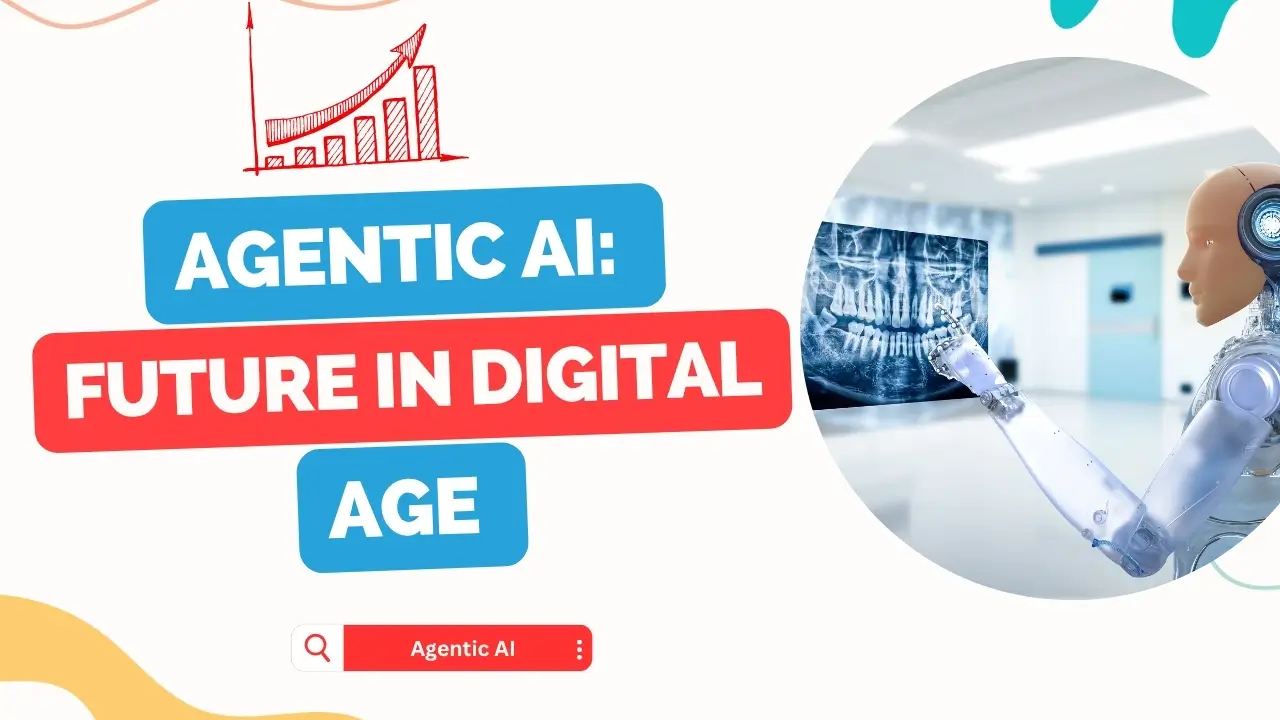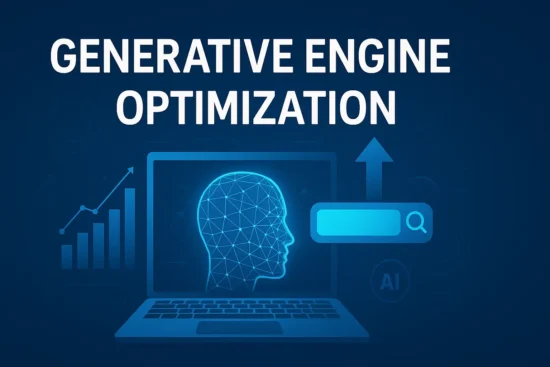
Artificial Intelligence, or AI as we call it in short, has seen big changes during the last ten years. It started from systems which followed fixed rules and moved on to machine learning and deep learning. With each step, AI became more advanced. The newest development in this progress is something called Agentic AI – a concept that gives AI systems freedom of action, ability to adjust themselves according to situations and powers for making decisions just like human beings do.
In this blog entry, we will explore the concept of Agentic AI and explain how it is different from conventional AI models. We’ll discuss its structure, practical uses in real life, advantages, obstacles encountered with it and what future prospects does it bring for diverse sectors.
What is Agentic AI?
Agentic AI means those AI systems which are made to work with some level of freedom, making choices and acting in order to reach certain objectives without continuous human control. This is different from the usual AI that needs clear instructions for producing outcomes. Agentic AI has ability to look into situations, create plans and carry out tasks at same time. blogs.nvidia.com+6datacamp.com+6glideapps.com+6
These systems are characterized by their ability to:
- Perceive: Gather and process data from various sources.blogs.nvidia.com
- Reason: Analyze information to make informed decisions.domo.com+1legal.thomsonreuters.com+1
- Act: Execute tasks autonomously based on their reasoning.aisera.com+2quiq.com+2datacamp.com+2
- Learn: Adapt and improve from experiences over time.splunk.com
This autonomy enables Agentic AI to handle complex, multi-step problems, making them invaluable in dynamic environments where real-time decision-making is crucial.datacamp.com+3aisera.com+3blogs.nvidia.com+3
Agentic AI vs. Traditional AI
To appreciate the significance of Agentic AI, it’s essential to contrast it with traditional AI models:
| Aspect | Traditional AI | Agentic AI |
| Autonomy | Limited; operates based on predefined rules or models. | High; can make decisions and act without explicit instructions. |
| Adaptability | Requires retraining or reprogramming to adapt. | Learns and adapts in real-time based on new data and experiences. |
| Task Complexity | Handles specific, well-defined tasks. | Capable of managing complex, multi-step processes. |
| Human Oversight | Often requires continuous monitoring and input. | Operates with minimal human intervention. |
| Decision-Making | Reactive; responds to inputs. | Proactive; initiates actions based on goals and environmental cues. |
In essence, while traditional AI acts as a tool, Agentic AI functions more like a collaborator or assistant, capable of independent thought and action.splunk.com
Architecture of Agentic AI
The architecture of Agentic AI systems is designed to facilitate autonomy and adaptability. Key components include:
- Perception Module: Processes inputs from various sources, such as sensors, databases, or user interactions.blogs.nvidia.com
- Reasoning Engine: Analyzes data to make decisions. This often involves advanced algorithms, including reinforcement learning and deep learning techniques.
- Action Executor: Carries out tasks based on decisions made by the reasoning engine.
- Learning Mechanism: Allows the system to learn from outcomes, refining its decision-making over time.
- Memory Store: Retains knowledge and experiences to inform future actions.
This modular design ensures that Agentic AI systems can operate in dynamic environments, continuously learning and adapting to new challenges.
Real-World Applications of Agentic AI
Agentic AI is not just a theoretical concept; it’s being applied across various industries to revolutionize operations:
1. Software Development
Tech companies are increasingly adopting Agentic AI systems to enhance developer productivity and expand the use of generative AI across various technical functions. These intelligent AI agents are being employed to accelerate code transformation processes and facilitate more seamless transitions in system architecture and programming tasks. timesofindia.indiatimes.com
2. Cybersecurity
Cybercrime is escalating globally, driven by advancements in artificial intelligence (AI), making attacks more frequent and devastating. AI-powered tools, such as WormGPT and Agentic AI, now enable attackers to craft sophisticated voice phishing campaigns and discover software vulnerabilities autonomously, lowering barriers for cybercriminals. ft.com
3. Manufacturing and Robotics
The document discusses advancements in artificial intelligence (AI) beyond traditional, software-based applications, highlighting its integration into physical systems. Key developments include fully autonomous factories and warehouses capable of independently producing vehicles, enhancing manufacturing efficiency. economictimes.indiatimes.com
4. Healthcare
In the healthcare field, Agentic AI can be helpful for watching over patients, diagnosing illnesses and planning treatments. These systems are able to analyze patient information as it happens and make prompt alerts and suggestions which enhance results for patients.
5. Finance
Financial institutions make use of Agentic AI for detecting fraud, evaluating risk and offering personalized service to customers. These systems have the capability to analyze transaction habits in order to identify unusual activities and offer customized financial guidance to clients.
Benefits of Agentic AI
The adoption of Agentic AI offers numerous advantages:tanium.com
- Enhanced Efficiency: Automates complex tasks, reducing the need for manual intervention.
- Improved Decision-Making: Analyzes vast amounts of data to make informed decisions quickly.
- Scalability: Can handle increasing workloads without proportional increases in resources.
- Adaptability: Learns from experiences, allowing for continuous improvement.
- Cost Savings: Reduces operational costs by automating tasks and improving resource utilization.
Challenges and Ethical Considerations
Despite its benefits, Agentic AI also presents challenges:
- Accountability: Determining responsibility for decisions made by autonomous systems can be complex.
- Bias and Fairness: Ensuring that AI systems do not perpetuate or amplify existing biases is crucial.
- Security: Autonomous systems can be targets for cyberattacks, necessitating robust security measures.
- Transparency: Understanding and explaining AI decision-making processes is essential for trust and compliance.
- Job Displacement: Automation of tasks may lead to workforce reductions, requiring strategies for workforce transition and upskilling.
Addressing these challenges requires a multidisciplinary approach, involving technologists, ethicists, policymakers, and other stakeholders.
The Future of Agentic AI
As Agentic AI continues to evolve, its impact will be profound:
- Integration with IoT: Combining Agentic AI with the Internet of Things will enable smarter, more responsive systems in homes, cities, and industries.
- Personalized Experiences: From education to entertainment, Agentic AI will tailor experiences to individual preferences and needs.
- Collaborative Workspaces: AI agents will work alongside humans, enhancing productivity and innovation.
- Ethical AI Development: Emphasis on developing AI systems that align with human values and societal norms will become paramount.
Embracing Agentic AI responsibly will unlock new possibilities, transforming how we live and work.
Conclusion
Agentic AI signifies a big jump in artificial intelligence, shifting from responsive instruments to active partners. Understanding its capabilities, applications and challenges can help businesses and individuals to better prepare themselves for a future where AI is crucial in decision making and task execution.
For agencies like digrab.com that concentrate on digital marketing, staying updated with these types of enhancements is extremely vital. The inclusion of Agentic AI can strengthen your campaign plans, automate regular tasks and offer a more detailed understanding into the actions of consumers. This will provide your agency with an advantage over others in this constantly changing realm of digital technology.




Leave a Reply